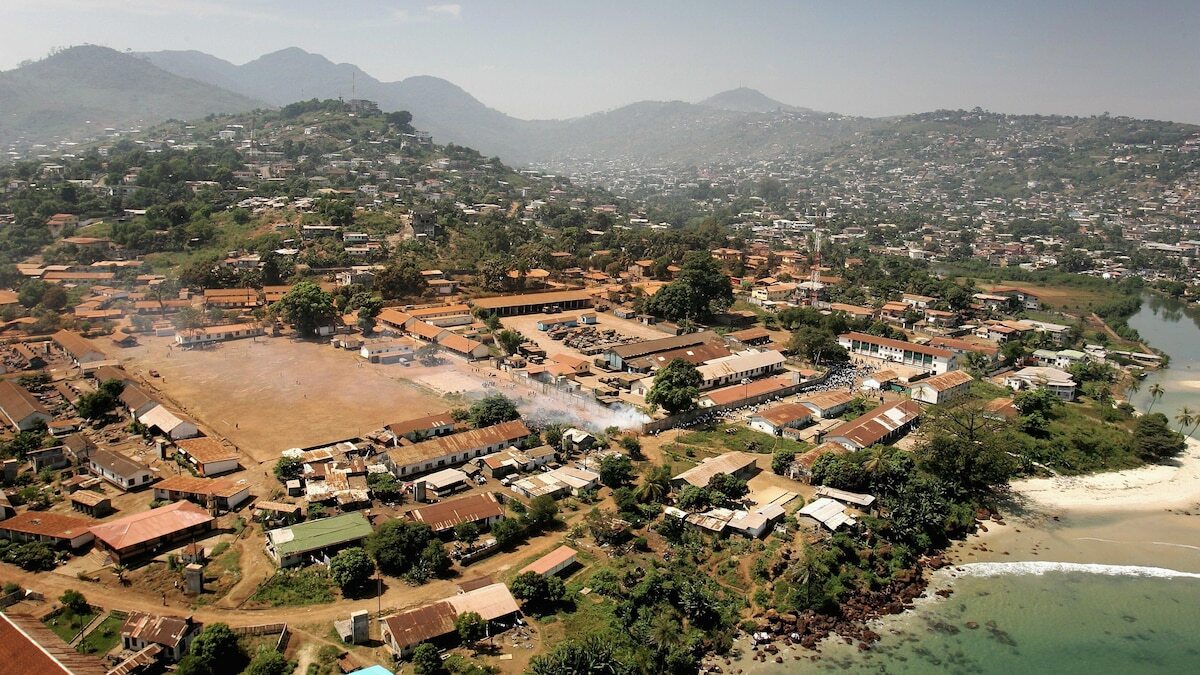
Sierra Leone is a small yet vibrant country in West Africa, often overlooked but brimming with rich history and culture. Ever wondered what makes this nation unique? From its lush landscapes to its diverse population, Sierra Leone offers a tapestry of experiences waiting to be discovered. Did you know it’s home to one of the world’s largest natural harbors? Or that it played a pivotal role in the transatlantic slave trade? Whether you're curious about its wildlife, languages, or historical landmarks, there's so much to learn. Let's dive into 20 fascinating facts about Sierra Leone that will leave you intrigued and informed.
Key Takeaways:
- Sierra Leone's geography is diverse, with rainforests, beaches, and a natural harbor in Freetown. It's slightly smaller than South Carolina and bordered by Guinea, Liberia, and the Atlantic Ocean.
- Sierra Leone has a rich history, was a center for the transatlantic slave trade, and gained independence from British colonial rule in 1961. It's home to 16 ethnic groups and faces economic challenges despite its natural resources.
Sierra Leone's Geography
Sierra Leone, a small country on the west coast of Africa, boasts a diverse landscape. From lush rainforests to pristine beaches, its geography is truly unique.
- Sierra Leone covers an area of about 71,740 square kilometers, making it slightly smaller than South Carolina.
- The country is bordered by Guinea to the north and east, Liberia to the southeast, and the Atlantic Ocean to the west.
- Freetown, the capital city, is located on a peninsula and is known for its natural harbor, one of the largest in the world.
- The highest point in Sierra Leone is Mount Bintumani, which stands at 1,945 meters (6,381 feet) above sea level.
- The country has several major rivers, including the Rokel, Moa, and Sewa rivers, which are vital for transportation and agriculture.
Rich History and Culture
Sierra Leone has a rich history and vibrant culture influenced by various ethnic groups and historical events.
- The name "Sierra Leone" means "Lion Mountains" in Portuguese, named by explorer Pedro de Sintra in 1462.
- Sierra Leone was a major center for the transatlantic slave trade, with Bunce Island serving as a key slave trading post.
- In 1787, Freetown was founded as a settlement for freed African American slaves and Black Loyalists from Nova Scotia.
- The country gained independence from British colonial rule on April 27, 1961.
- Sierra Leone is home to 16 ethnic groups, with the Mende and Temne being the largest.
Natural Resources and Economy
Sierra Leone is rich in natural resources, which play a significant role in its economy. However, the country faces challenges in managing these resources.
- Diamonds are one of Sierra Leone's most valuable natural resources, earning it the nickname "The Land of Diamonds."
- The country also has significant deposits of rutile, bauxite, and gold.
- Agriculture is a major part of the economy, with rice being the staple food crop.
- Fishing is another important industry, thanks to the country's extensive coastline and rich marine life.
- Despite its wealth of resources, Sierra Leone remains one of the poorest countries in the world due to a history of civil war and corruption.
Biodiversity and Wildlife
Sierra Leone's diverse ecosystems support a wide range of plant and animal species, some of which are unique to the region.
- The country is home to the Gola Rainforest National Park, one of the largest remaining blocks of Upper Guinean rainforest.
- Tiwai Island Wildlife Sanctuary is a biodiversity hotspot, hosting rare species like the pygmy hippopotamus and Diana monkey.
- Sierra Leone's coastal waters are rich in marine life, including sea turtles, dolphins, and various fish species.
- The country has over 200 species of birds, making it a popular destination for birdwatchers.
- Efforts are being made to protect endangered species and conserve natural habitats through various conservation programs.
Final Glimpse at Sierra Leone
Sierra Leone's rich history and vibrant culture make it a fascinating place. From its diamond mines to the Gola Rainforest, the country offers a mix of natural beauty and historical significance. The Bunce Island slave fort and the Cotton Tree in Freetown are just a couple of landmarks that tell stories of the past. The Krio language and traditional music add to the cultural tapestry, while the Tacugama Chimpanzee Sanctuary highlights efforts in wildlife conservation. Despite challenges, Sierra Leoneans show resilience and a strong sense of community. Whether you're interested in its colonial history, biodiversity, or cultural festivals, Sierra Leone has something for everyone. This West African gem continues to captivate those who take the time to learn about it. So, next time you think of travel or history, consider the unique and diverse offerings of Sierra Leone.
Frequently Asked Questions
Was this page helpful?
Our commitment to delivering trustworthy and engaging content is at the heart of what we do. Each fact on our site is contributed by real users like you, bringing a wealth of diverse insights and information. To ensure the highest standards of accuracy and reliability, our dedicated editors meticulously review each submission. This process guarantees that the facts we share are not only fascinating but also credible. Trust in our commitment to quality and authenticity as you explore and learn with us.


